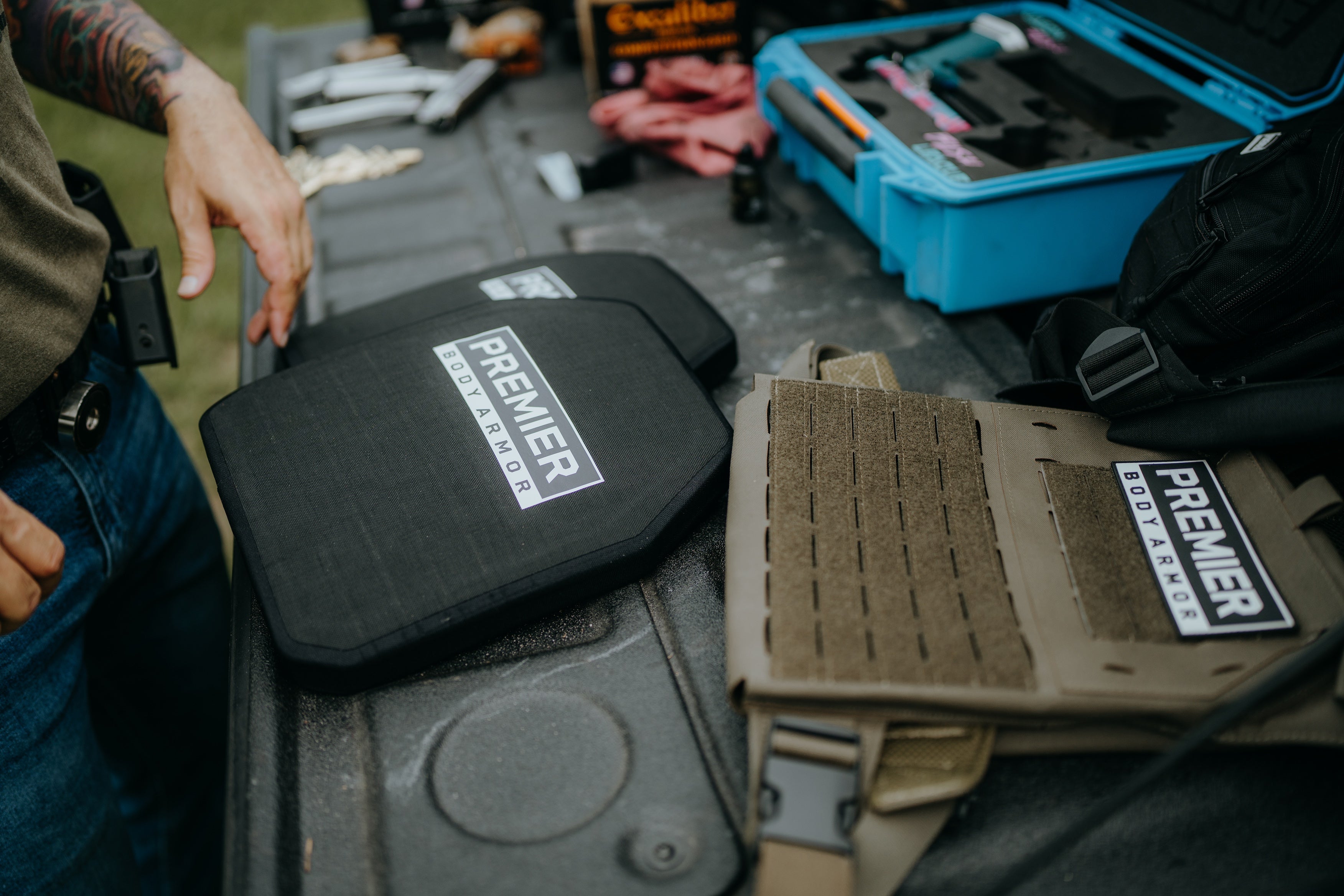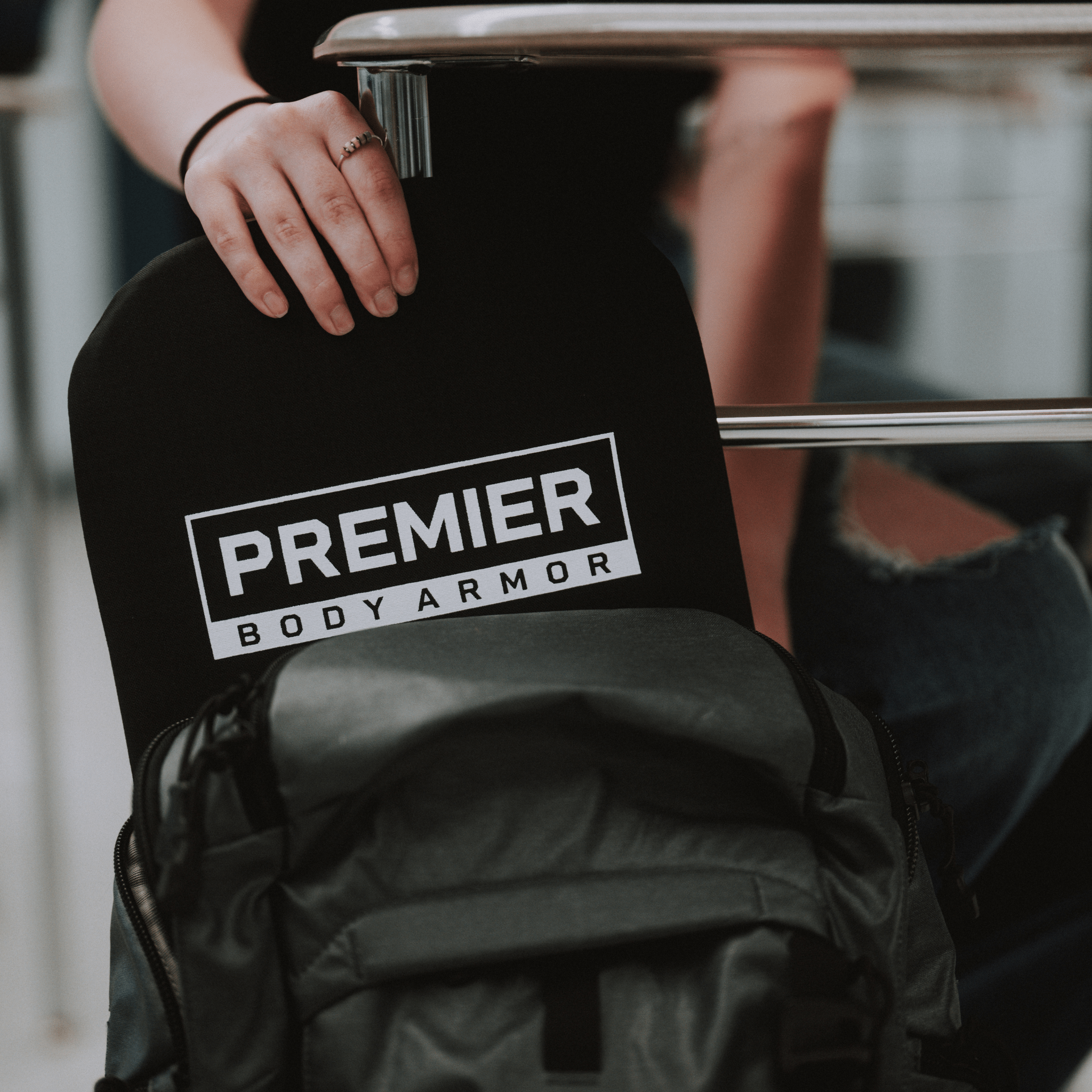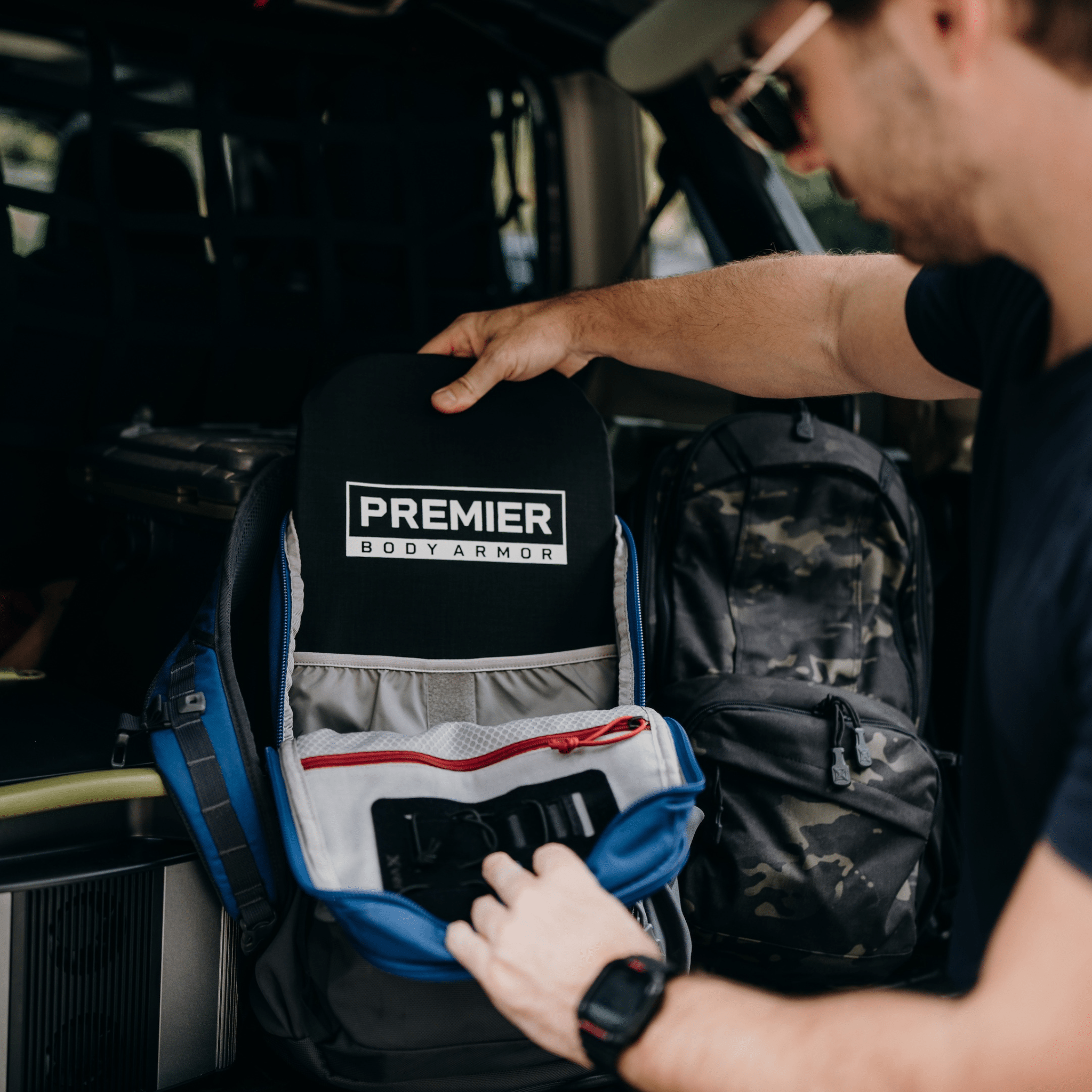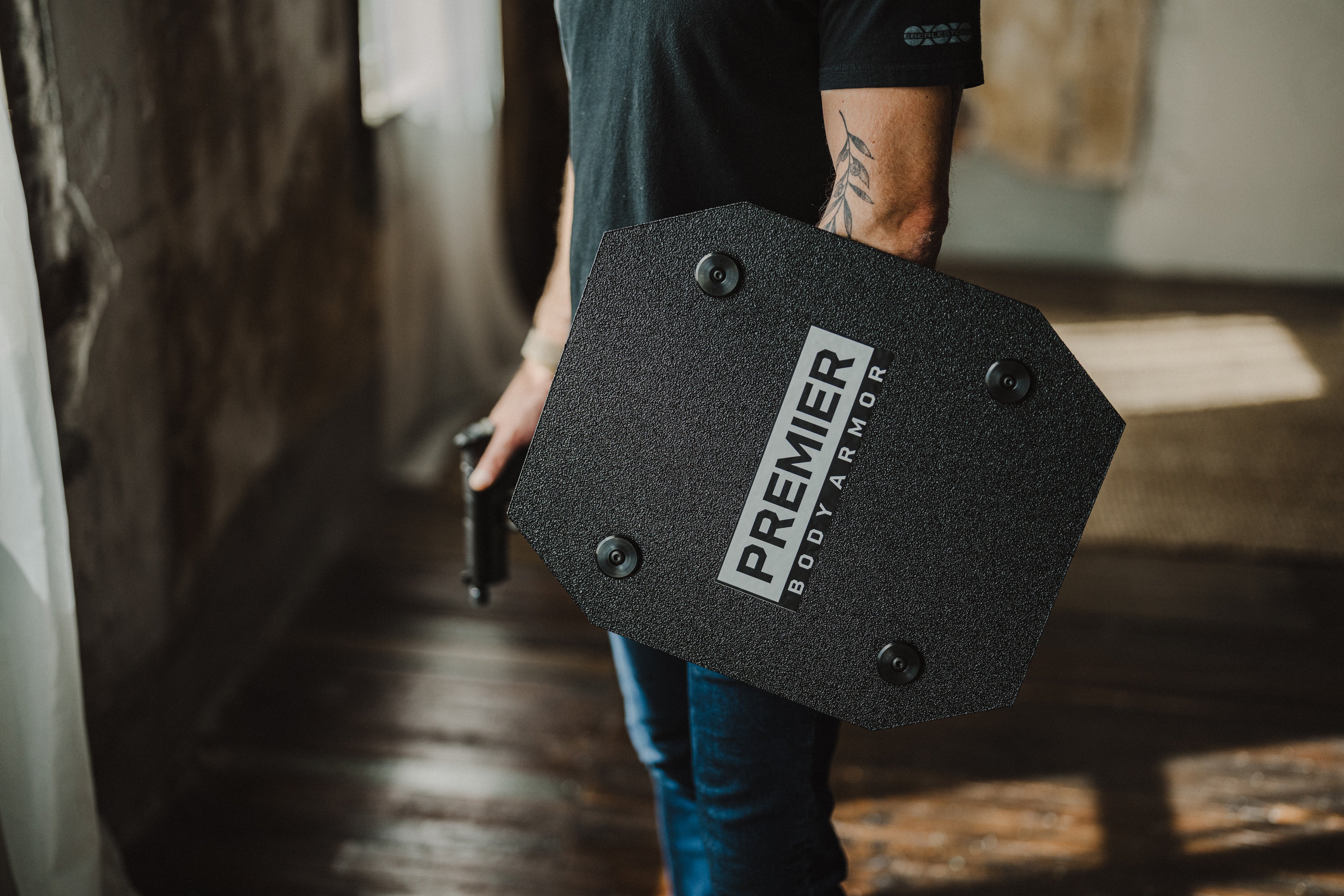How to Build a Safe Room in Your House: A Step-by-Step Guide
Seconds matter in an emergency. The more time police or first responders have to reach you, the greater the chance that you will survive. Having a secure place to retreat in your home can make all the difference for your family’s safety. That’s where a safe room comes in.
A safe room is a hardened space you can reach fast and hold securely until danger passes.
Learning how to build a safe room gives you a fortified space during home invasions, natural disasters, or other threats. However, a safe room in your house goes beyond mere heavy doors and walls. We’ll cover location, wall and door reinforcement, door hardware, supplies, and training.
You’ll also see where personal ballistic protection fits as the final layer. Use this to plan, build, and practice so your family can execute under stress.
At A Glance
• Pick location: central, lowest floor, no windows; shortest route from bedrooms.
• Harden structure & door: reinforced walls/panels + steel/composite door, long screws, multi-point lock.
• Layer gear: 24–72 hr supplies, comms, and on-hand ballistic protection (shield + vest) for the defender.
Choose the Best Location in Your Home
Location determines not only how effective the space will be but also how quickly you and your family can reach it during a crisis. The best place for a safe room is a central room on the lowest floor of your house with few or no windows. Basements and interior closets often work well. Utility rooms can also be good choices.
Accessibility is also important. A safe room in a house that’s too far from bedrooms or living areas may not be practical when time is short. You’ll want to build your safe room in a location that everyone can reach in as little time as possible, so factor that into your planning.
Also, consider structural advantages. Rooms with concrete walls or that are surrounded by earth naturally provide more protection than spaces with thin drywall or exposed framing. That’s particularly true during hurricanes, tornadoes, and other natural disasters.
Picking the right location is the most important step for a safe, reliable panic room.
Reinforce the Room Walls and Structure
To reinforce safe room walls when building a safe room so they can withstand forced entry and ballistic threats, start with structure.
If you’re building a safe room from scratch, you’ll have more flexibility. Concrete or CMU with rebar is ideal, and framed walls can be upgraded with bulletproof panels (UL 752-rated fiberglass) installed behind drywall to keep the room discreet.
If you’re upgrading an existing room, or need fast, modular reinforcement, the Fortis Bulletproof Blanket that can be mounted to walls for quick, effective reinforcement.
Bullet-resistant drywall or fiberglass panels can be installed behind traditional finishes so your safe room still looks like part of the home.
Remember, reinforcement doesn’t have to compromise comfort. It just needs to add a layer of strength.
Can You Retrofit an Existing Room Into a Safe Room?
Yes, you can absolutely add a safe room by upgrading a space you already have. Many families convert a closet into a safe room because they are central and windowless. Note that a central closet is preferable to one located within your home’s outer wall.
Reinforce walls selectively, upgrade the door and door hardware, add comms and power, and stock supplies to turn an ordinary closet or room into a secure space.
Fortify the Door with High-Security Hardware
A safe room is only as strong as its weakest point, and for most rooms, that’s the door. To secure a safe room door, you’ll need to upgrade far beyond a standard lock-and-knob setup. A true panic room door should be reinforced with heavy-duty deadbolts, high-end strike plates, longer hardware screws, and hinges that can’t be tampered with from the outside.
You can also install multi-point locking systems, which anchor the door into the frame at several points instead of just one. This makes it exponentially harder for intruders to kick the door in. Remember, your goal isn’t just to buy time. You need to create a reliable barrier that gives you and your family safety.
What Type of Door Is Best for a Safe Room?
For a DIY safe room, a steel or composite door with a reinforced frame outperforms wood vs. steel door options. While solid wood doors are a step up from hollow-core models, they’re still not great for high-level defense. A steel door or a composite reinforced with metal is the gold standard.
Steel offers surprising affordability, excellent impact resistance, can be paired with ballistic panels, and resists forced entry attempts. If the budget allows, choose a steel unit specifically designed for safe rooms. If not, upgrading a solid wood door with steel plating and a reinforced frame can still make your safe room extremely secure.
Stock Your Safe Room with Essentials
Even the strongest safe room won’t serve you well if you don’t prep it with the right gear. At a minimum, you’ll want to keep water (1 gal/person/day), non-perishable food, first aid supplies, flashlights, and a way to communicate (like a charged cell phone or two-way radio) inside. You want enough safe room supplies to last 24 to 72 hours.
For a more thorough setup, see our guide for building bug-out bags that can double as safe room kits. These make sure you’ll have access to medical gear, protective equipment, and other essentials if you need to shelter longer than expected.
Don’t forget comfort items for kids, like blankets, games, or books; they can make a stressful situation more bearable. Having a go bag or bug-out bag is also a great way to be able to quickly grab emergency gear for safe room hideout.
Stocking a safe room in the house correctly is just as important as reinforcing the walls and door.
Add Ballistic Protection for Extra Safety
For ultimate security, consider adding personal protection gear and shields inside your safe room. Even reinforced walls can benefit from extra layers of defense. Stage a bulletproof shield near the door and keep personal protection gear sized for primary defenders.
- Level IIIA Home Shield: handgun threats, fast to deploy, lightweight.
- Stratis Shield Level III: rifle-rated shield for higher-level threats.
- Bulletproof vests: wearable armor for hands-free defense while managing family and comms.
These are all designed to stop common ballistic threats. Having them inside your safe room makes sure that you’re prepared not just to hide, but to withstand and survive potential attacks. Think of them as the final layer of protection: reinforced walls keep threats out, but bulletproof shields and gear keep you safe if intruders manage to penetrate or fire through barriers.
Create an Emergency Plan and Practice It
Even the strongest safe room in the house won’t help you if your family doesn’t know how and when to use it. That’s where an emergency plan comes in.
A safe room emergency plan should outline clear steps: what emergencies warrant the safe room, how family members get to the room, who secures the door, and what to do once inside. This includes locking the door, calling 911, and staying put until help arrives or the situation resolves.
Practice is just as important as preparation. Treat it like a fire drill. Run through the steps regularly so everyone, including kids, knows exactly what to do when the time comes. Remember, it’s likely to be a stressful situation, so you want everyone to have the plan down perfectly.
Consider possible scenarios beyond home invasions, too. A safe room can also protect you during tornadoes, hurricanes, earthquakes, or civil unrest. The more you think through panic room protocol, the more versatile your safe room becomes.
With a solid home invasion plan, a reinforced structure, ballistic protection, and supplies, your safe room is a proactive shield for your family’s safety.
Ready to Build a Safe Room in Your Home? Premier Body Armor Helps You Stay Protected
Creating a truly secure space takes more than just heavy doors and strong locks. You need layered protection that combines structure, planning, and personal defense.
From bulletproof blankets that can be mounted as extra wall protection to shields and ballistic vests designed for real-world threats, Premier Body Armor offers practical solutions to make your safe room more effective. If you’re thinking about building a safe room or just upgrading a closet or office into a secure space, we can help you add important layers of protection.
With realistic planning and the right kit, building a safe room turns from an idea into a repeatable plan, and a safe room in house you can trust when seconds matter.
For more on basic safety strategies, check out our guide on daily preparedness.
Planning for All Eventualities
A safe room in your house isn’t just a fortified space, but a strategic plan against anything that might happen. By carefully choosing a secure location, reinforcing walls and doors, adding ballistic protection, and stocking essential supplies, you create a sanctuary designed to protect your family in emergencies. Regular practice combined with a well-thought-out safe room emergency plan makes sure that everyone knows how to act quickly and confidently when seconds matter.
Don’t wait until a crisis happens to think about safety. Start planning and building your safe room today with the right tools and guidance from Premier Body Armor. Explore our full lineup of bulletproof shields, vests, and protective gear to make your safe room as secure as possible.
FAQs
What’s the fastest room to convert into a safe room?
An interior closet near bedrooms. It’s central, usually windowless, and easy to convert closet into safe room with selective wall reinforcement and a hardened door.
Do I need a special door or will a solid wood door work?
Solid wood beats hollow-core, but a steel/composite slab with reinforced frame, long screws, and a multi-point lock is better, especially for a panic room door. For storms, look for ICC-500/FEMA-tested assemblies.
Is soft body armor worth staging in a safe room?
Yes. NIJ IIIA soft armor is handgun-rated and far more wearable, especially when you must move kids, manage comms, or hold a shield.
How often should we practice?
Quarterly. Run timed drills from bedrooms to the safe room, practice 911 calls, and rehearse weather and intrusion variants.










Leave a comment